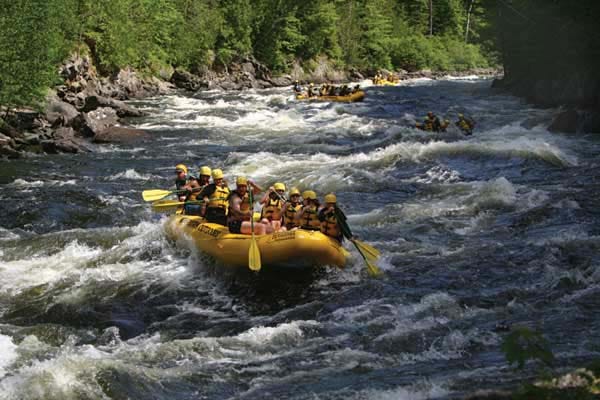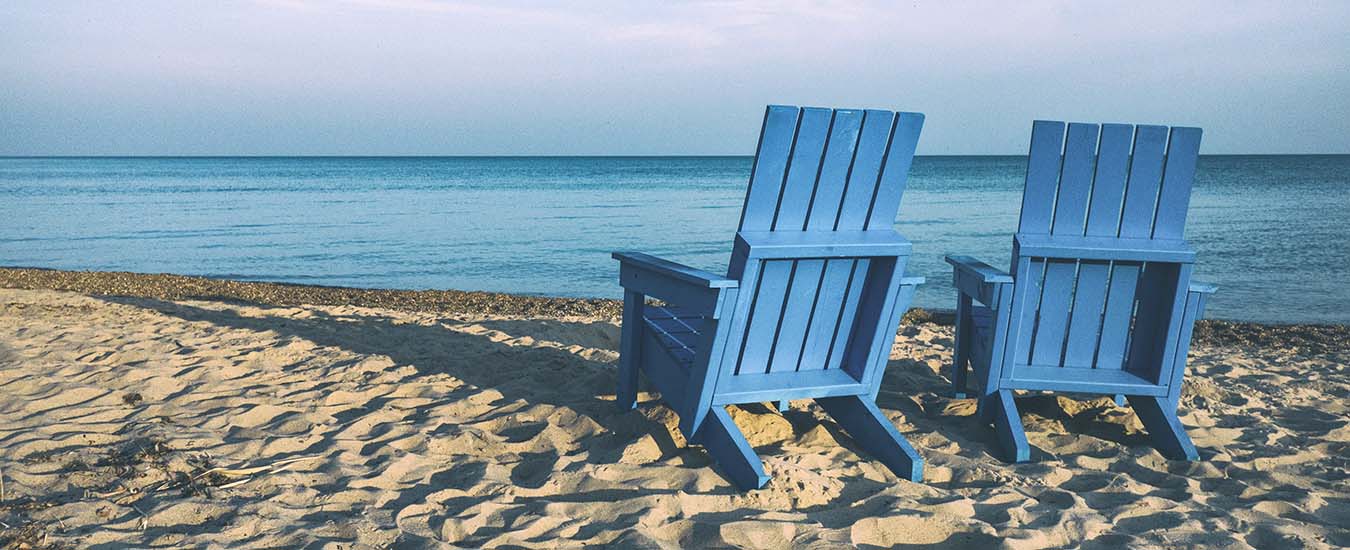Thrills, and hopefully no spills, rafting Maine's white water rivers.
It's rush hour in the scenic woods of Northern Maine and the rafts are ready and waiting. At 10 a.m. the Harris Dam releases extra flow and the brightly coloured crafts peel out one by one into the narrow maw of the Kennebec River.
The boats move from side to side, testing the waters for a 12-mile plunge through aptly named rapids like the "Taster" and "Big Mama". The daunting 10-foot walls of water at the "Three Sisters" and the legendary drop at "Magic Falls" will "wet" more than appetites.

There is nothing virtual about running these rapids. In a world of Wii activities, this is the real deal-right down to the cold water that flows from the mountains and the constant danger of capsizing. Yet, despite the element of risk, white water rafting is one of the fastest growing outdoor adventures in (especially northern) Maine, where controlled releases from hydroelectric dams have made a paddler's paradise of three unique rivers: the Kennebec, the Penobscot and the Dead.
For families and first-timers, the adventure begins with Class I to IV rapids (see page 6) on the Kennebec. "It's amazing," says 14-year old Rachelle Smith. "You know you're not in danger, but it's still really exciting." For the past two summers Rachelle and her family have made the four hour drive from their home in Saint John, NB, to The Forks, a remote wilderness village in Northern Maine that boasts more than a dozen rafting companies.
Rachelle was 12 when her family first ran the Kennebec. Her brother Alex was 10. Their grins spread wide as they recall that first run: the gourmet, grilled lunch on a riverside beach; the steady rain (according to Alex it was no problem-they had to get wet anyway); and the fun-loving guide.
Most of the commercial rafts will hold eight people---four seated down each side with a support for their feet and a big rope that runs down the centre. "They call it the 'Holy Crap Handle,'" laughs Alex and Rachelle's father, Steve Smith. "There are times when everyone grabs it-even the guide." One of these times is captured in a 10 X 12 shot of the Smith's raft blasting through Magic Falls. "It looks like 16 feet of water behind us," says Steve.
 Precautions taken by the Smith's guide went a long way in allaying Steve's initial concern for his children's safety. Other safeguards include equipment that's sized specifically for youngsters and a range of age restrictions imposed by individual outfitters for the rivers they run. The Smiths patronize Northern Outdoors, a company that helped pioneer white water rafting in the late 1970s. The policy there is that children must be eight years of age to run the Kennebec; 12 to run the Penobscot; and 15 for the Dead.
Precautions taken by the Smith's guide went a long way in allaying Steve's initial concern for his children's safety. Other safeguards include equipment that's sized specifically for youngsters and a range of age restrictions imposed by individual outfitters for the rivers they run. The Smiths patronize Northern Outdoors, a company that helped pioneer white water rafting in the late 1970s. The policy there is that children must be eight years of age to run the Kennebec; 12 to run the Penobscot; and 15 for the Dead.
Rachelle already has plans to run the Penobscot as soon as Alex is 12. The put-in is scenically located in Baxter State Park at the base of Mt. Katahdin, the tallest mountain in Maine. The 15-mile run begins at McKay Station, pushing through Advanced Class IV and V rapids with names like "Exterminator" and "Troublemaker". The route ends at Pockwockamus Falls after a succession of sheer drops and calm pools in the granite-walled chasm of the Ripogenus Gorge.
When both children are old enough, the Smiths are keen to return to The Forks for a stab at the Dead. The intervening summers will help prepare them for a spine-tingling onslaught of Class III, IV and V whitewater in the 15-mile route from Grand Falls to Poplar Hill Falls. Unlike the Kennebec and the Penobscot, the Dead runs only 10 times a year when water is released from the dam. When it does run, there's no time to commune with nature. The Dead boasts more continuous whitewater than any other river in the Eastern United States.
For now, the Smiths are content to get their feet wet rafting the Kennebec. Like life, white water rafting isn't really about the destination; it's about the journey.
If you go…
- Guided runs are the best way to experience rafting in Maine.
Most outfitters offer transportation to and from their base facilities to the river, pre-trip safety orientations and lunch. Equipment must meet safety standards set by the Department of Inland Fisheries and Wildlife and each of their rafts must carry a guide who is registered for whitewater by the State of Maine. Prices for a full-day trip typically range from US$70 to $160 per person, based on the time of the year, the day of the week, the number of people in the party, and the river.
Larger outfitters offer vacation packages that include meals, lodging and wilderness activities like hiking, rock climbing, kayaking, fly-fishing and moose watching. Accommodations in rafting country range from campgrounds and cabins to log-built condos called logdominiums. Some outfitters in The Forks have on-site restaurants. One has a microbrewery. - Bring a bathing suit, soft-soled shoes like sneakers, warm clothing and a spirit of adventure. Have a dry change of clothes and a towel waiting at the end of the trip.
- Rapids intensify during spring runoff, making spring the high water mark for thrill seekers. It's also the best time to see moose. Warm summer days are the ideal time to swim beside the rafts. They're also the ideal time to capsize.
Whitewater Classifications:
- Class I (Easy): Moving water with small waves and no major obstructions.
- Class II (Novice): Moving water with larger waves and clear passages.
- Class III (Intermediate): Rapids with strong eddies, high waves, powerful currents and tight passages. Some technical maneuvering is required to avoid obstructions.
- Class IV (Advanced): Powerful but predictable rapids that are longer and steeper than Class 3 rapids and require many maneuvers to avoid obstructions. Advance scouting may be required and swimming is a challenge. Self-rescue may be difficult.
- Class V (Expert): Long, violent rapids with large waves, powerful holes, congested chutes and boulders. Scouting is recommended and swimming is dangerous. Rescue may be difficult.
- Class VI (Extreme): Formerly classified as unrunnable by any craft, these dangerous, unpredictable rapids are now considered unraftable. Severe hazards like waterfalls present great risk of injury or loss of life.
(Adapted from the American version of The International Scale of River Difficulty, a rating system used to compare river difficulty throughout the world.)
